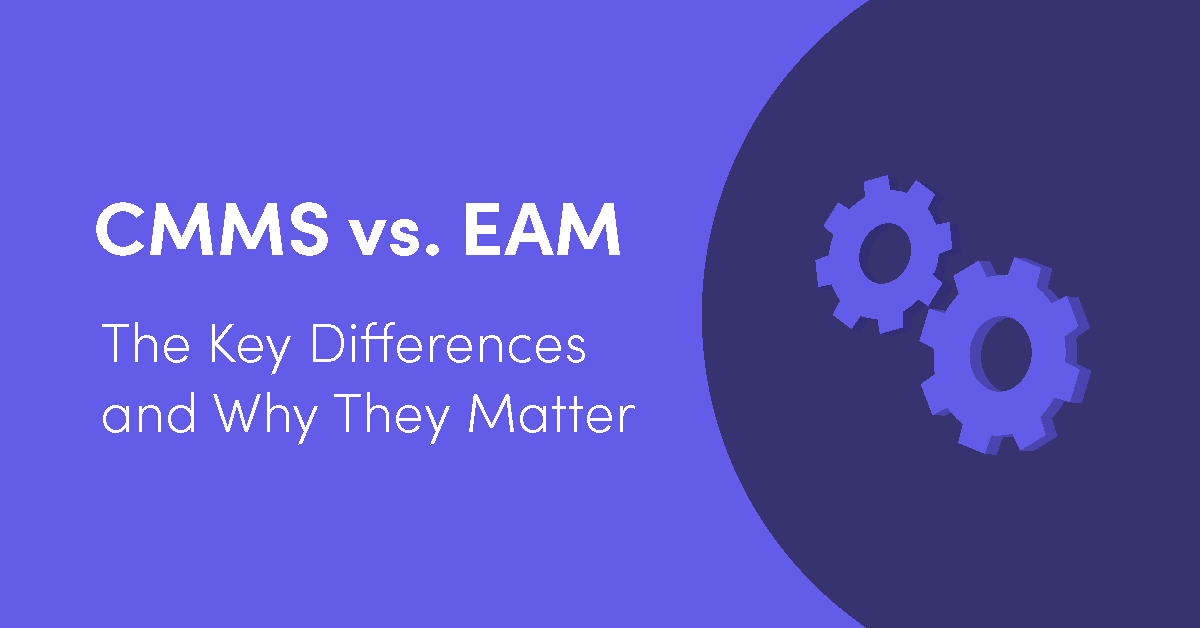When it comes to managing assets and maintenance activities, two commonly used software systems are Enterprise Asset Management (EAM) and Computerized Maintenance Management System (CMMS). While both systems share similarities in their functionalities, they serve different purposes within an organization. In this article, we will explore the key differences between EAM and CMMS to help clarify their distinct roles and benefits.
Enterprise Asset Management (EAM)
Enterprise Asset Management (EAM) is a comprehensive software system that focuses on the management of an organization’s assets throughout its entire lifecycle. EAM systems are designed to handle a wide range of assets, including equipment, facilities, infrastructure, and fleets. The primary goal of EAM is to optimize asset utilization, enhance asset performance, and maximize the value of assets for the organization.
EAM systems typically encompass various functionalities such as asset register and inventory management, preventive maintenance scheduling, work order management, asset tracking, condition monitoring, document management, reporting and analytics, integration capabilities, and mobile access. EAM provides a holistic view of assets, enables strategic decision-making, and supports long-term asset planning and optimization.
Computerized Maintenance Management System (CMMS)
A computerized Maintenance Management System (CMMS), on the other hand, is a software system specifically focused on managing maintenance activities and workflows. CMMS systems are primarily used to streamline maintenance processes, track work orders, and ensure efficient utilization of resources. These systems are commonly employed in industries with high maintenance requirements, such as manufacturing, healthcare, and utilities.
CMMS systems typically include functionalities such as work order management, preventive maintenance scheduling, asset tracking, inventory management (focused on maintenance-related spare parts and supplies), labor management, and reporting. The main purpose of CMMS is to facilitate the planning, execution, and tracking of maintenance tasks to ensure timely repairs, minimize downtime, and optimize maintenance operations.
Key Differences
- Scope: The key difference between EAM and CMMS lies in their scope. EAM has a broader scope, encompassing the management of assets throughout their lifecycle, including procurement, utilization, maintenance, and retirement. CMMS, on the other hand, is focused specifically on managing maintenance activities and workflows.
- Functionality: EAM systems offer a comprehensive suite of functionalities that go beyond maintenance management. They include asset tracking, condition monitoring, document management, integration capabilities, and analytics. CMMS systems, while also including maintenance-related features, are more streamlined and focused on work order management, preventive maintenance scheduling, and inventory management related to maintenance activities.
- Asset Lifecycle Management: EAM systems are designed to optimize asset performance and value throughout their lifecycle. They provide capabilities for strategic asset planning, tracking asset utilization, analyzing asset data, and making informed decisions about asset investments and retirement. CMMS systems, on the other hand, are primarily concerned with managing the maintenance aspects of assets and ensuring their operational reliability.
Which System to Choose?
The choice between EAM and CMMS depends on the specific needs and goals of the organization. If the organization’s primary focus is on asset lifecycle management, optimization, and strategic decision-making, an EAM system would be more suitable. EAM systems are beneficial for industries with complex assets and long-term asset planning requirements.
On the other hand, if the organization’s main objective is to streamline maintenance processes, track work orders, and ensure efficient utilization of maintenance resources, a CMMS system would be a better fit. CMMS systems are particularly useful for industries with high maintenance demands and a need for effective maintenance management.
It’s worth noting that some software vendors offer integrated solutions that combine EAM and CMMS functionalities, providing organizations with the benefits of both systems. These integrated solutions offer a comprehensive approach to asset and maintenance management.
While both EAM and CMMS systems are designed to support asset and maintenance management, they have distinct scopes and functionalities. EAM systems focus on the optimization of assets throughout their lifecycle, providing a holistic view and supporting strategic decision-making. CMMS systems, on the other hand, are primarily concerned with managing maintenance activities and workflows to ensure efficient maintenance operations. Understanding the differences between these systems helps organizations choose the most appropriate solution based on their specific requirements and goals.








